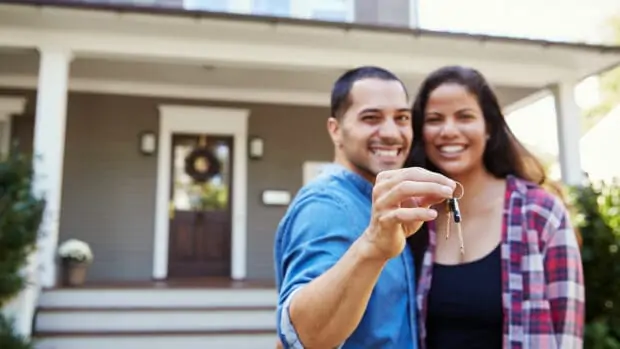Higher inflation has caused rising interest rates which is bad news for homebuyers. Rising rates increase the cost of borrowing which result in higher mortgage rates and an overall higher total cost of homeownership. In response, the housing market has seen the return of the mortgage buydown.
Mortgage buydowns are when homebuyers pay an upfront fee in exchange for a lower interest rate on their home loan, thus reducing monthly mortgage payments. Does that mean a mortgage buydown is the right choice for you? Here are five essential things a prospective homebuyer needs to know about mortgage buydowns and how they work.
1. Reduced Mortgage Interest Rates Aren’t Always Permanent
Here’s how mortgage buydowns work: Homebuyers purchase mortgage points, which are also sometimes referred to as discount points. Each point costs 1% of the total mortgage amount but lowers the loan’s interest rate typically by 0.25% (the precise amount can vary by lender).
If a person wanted to decrease their mortgage by a full 1%, they would have to buy four mortgage points and pay 4% of their mortgage upfront. The difference of a single percent in interest prices can save homebuyers thousands of dollars in the long run.
However, the lowered interest rates may not last the lifetime of your mortgage. Some mortgage rate deductions are temporary and others are permanent. How long your reduced interest rate applies and how it changes overtime, will depend on the mortgage buydown structure.
2. There Are Different Types of Mortgage Buydown Structures
Mortgage buydowns are negotiated and sellers have the flexibility to choose an arrangement that best suits their needs. The most common types of mortgage buydown structures are temporary buydowns. These lower the buyer’s mortgage rate for the first one, two, or three years of the loan. After that, loans reach a higher fixed rate.
There are three types of temporary buydowns:
- 1-0 Buydown: The interest rate will be 1% lower for the first year of your mortgage
- 2-1 Buydown: The interest rate will be reduced for two years. In the first year, the rate will be 2% lower than the permanent rate. In the second year, the rate will increase to be only 1% lower before returning to the permanent rate the following year.
- 3-2-1 Buydown: The interest rate will be lowered by 3% the first year, then increase to a 2% rate reduction the second year, and then increase again to a 1% reduction in the third, and final year of the temporary reduction.
Permanent deductions reduce the interest rate over the life of the entire loan and typically cost 6-8 points to reduce the mortgage by 1%.
Say you obtain a 30-year fixed mortgage at the current rate of 6.5%. Your home costs $500,000, and you put 20% – $100,000 – down, leaving you with a $400,000 loan. With interest, your monthly payment would be $2,528, or $910,080 over 30 years.
A permanent 1% mortgage rate buydown would cost $16,000 total, leaving you with a mortgage rate of 5.5%. The new monthly payment would be $2,271, a 30-year cost of $817,560, and overall savings of $92,520.
Permanent mortgage buydowns are a good option if you have cash and are buying your forever home. Temporary rate buydowns are best if you expect to sell or refinance your mortgage before your temporary rates expire.
3. Every Mortgage Buydown Has a Breakeven Point
Mortgage buydowns are a worthy investment when the accumulated savings from the lower mortgage rate are more than the cost of the discount points. This is known as the “breakeven point.
To calculate the breakeven point, divide the cost of the discount points by your monthly savings. In the above example, you would subtract $2,271 from $2,528, for $257 in monthly savings. The cost of the discount points was $16,000, and $16,000 divided by 257 is 62.25, which means your discount points will pay off at 63 months.
So, the mortgage points will pay off if you stay in your home for more than five years. Buying the discount points but selling before 63 months would cost more than agreeing to the original mortgage rate.
4. Mortgage Buydowns Are Different Than Adjustable-Rate Mortgages
Mortgage buydowns are not the same as adjustable-rate mortgages (ARMs) despite their similarities.
In a mortgage buydown, you buy a lower interest rate forever or temporarily, with pre-set rates throughout the mortgage.
ARMs work differently. An ARM is a loan with an interest rate that starts at a fixed rate and then changes over the mortgage’s lifetime. During the fixed rate period, which is typically between three and 10 years, you have a lower interest rate and lower mortgage payments. After that, you enter the adjustment period, when your interest rate can go up or down based on market conditions.
ARMs save you money in the short term but come with uncertainty, as your mortgage rate can change every six months to a year after the fixed period ends. Typically, ARMs are recommended if you are open to risk or plan to sell or refinance your home before your adjustable period begins.
5. Buyers, Sellers, or Homebuilders Can Purchase Mortgage Buydowns
Mortgage buydowns aren’t only purchased by home buyers. In fact, mortgage buydowns can be purchased by home sellers or home builders as well.
Home sellers sometimes pay discount points to woo buyers and defray moving and closing costs. Home builders will sometimes also contribute to a mortgage buydown to make newly built homes more appealing to buyers.
Mortgage buydowns, whether permanent or temporary, exist to reduce mortgage rates and make it possible for more buyers to enter the market. Mortgage rates aren’t expected to drop this year, so if you’re in the market for a home, a buydown may be a strong option.






